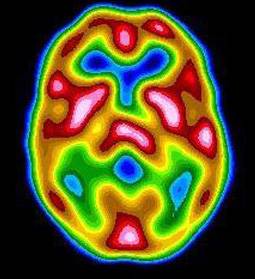The U word

We have all been writing assessment criteria for a newly validated Access course. When framing the wording of criteria, people turn to examples from other sources including the relevant A level syllabus and BTEC National Diploma units. The word ‘understand’ often appears in these published sources, but is rejected by the Access subject experts.
I think the subject experts are right to balk at the U word. You can’t use a brain scan to ‘see’ if someone understands the straight line graph. I see ‘understanding’ as what we are aiming at, but, like a strange disease, it has to be identified by symptoms. The symptoms of understanding will be different for different subjects, and that is where I begin to disagree with those subject experts appointed by the validation panels.
Benjamin Bloom’s taxonomy of learning objectives in the cognitive domain is often used as a source of words to frame objectives or criteria. Bloom provides what are termed ‘question cues’ for each of the 6 levels of the taxonomy as follows…
- Knowledge: list, define, tell, describe, identify, show, label, collect, examine, tabulate, quote, name, who, when, where
- Comprehension: summarize, describe, interpret, contrast, predict, associate, distinguish, estimate, differentiate, discuss, extend
- Application: apply, demonstrate, calculate, complete, illustrate, show, solve, examine, modify, relate, change, classify, experiment, discover
- Analysis: analyze, separate, order, explain, connect, classify, arrange, divide, compare, select, explain, infer
- Synthesis: combine, integrate, modify, rearrange, substitute, plan, create, design, invent, what if?, compose, formulate, prepare, generalize, rewrite
- Evaluation: assess, decide, rank, grade, test, measure, recommend, convince, select, judge, explain, discriminate, support, conclude, compare, summarize
These ‘question cue’ words can be used to describe most of the ‘symptoms’ of understanding a given topic I think. My problem is the allocation of levels in Bloom’s taxonomy to levels of qualification. As far as we can second guess things, we suspect that the scheme goes something like this…
- Level 1: Knowledge, comprehension
- Level 2: Application, analysis
- Level 3: Synthesis, evaluation
Worse than this crude and, I think, false allocation of qualification levels to levels in the taxonomy is the requirement that an assessment unit written at level 3 should only contain level 3 assessment criteria. As the student must show evidence of achievement of all criteria in a unit to achieve that unit, then surely as long as there are some or a a majority of outcomes at level 3, then that must be regarded as a level 3 unit.
As I argued above, the symptoms (or behaviour of the student) that we use to infer understanding must be relevant to the subject area under discussion. Gas fitters must be competent as tragedy ensues if they are not. Level 3 and 4 Gas Installation qualifications therefore stress knowledge and application and they must continue to do so, as must qualifications for eye surgeons and dentists.
Science subjects including maths differentiate by topic. If you know harder topics, and can demonstrate that knowledge by stating and describing and explaining and listing, then you are working at a higher level than another person who can state, describe, explain and list easier things. The level of an assessment unit should be defined by the topics covered rather than the cue words, although cue words should still be chosen carefully to clarify what behaviour the student should exhibit in order to allow us to diagnose understanding. Science teachers must explain new harder topics and link these to existing knowledge, they must provide hooks and analogies and challenge with puzzles and patterns.
I suspect that the allocation of qualification levels to the taxonomic levels of Bloom occurred in the humanities subjects. These humanities subjects differentiate by student response to task. For example the whole class can write an essay on Freud for 90 minutes and every single student can file out of their exam having completed the task and felt successful. The teacher must then grade the quality of the responses, and the symptoms of understanding of Freud’s psychology may well involve an ability to compare, contrast and make judgments. A student who describes and lists may not be displaying the symptoms that define the sophistication of understanding needed for the qualification. The tutor must then give feedback to the student who is listing and describing, and that feedback must enable the student to move up the levels in Bloom’s taxonomy without crushing the student. There lies an important aspect of the role of humanities teacher.
Subject experts, please, have regard to the ‘community of practice’ in your subject! Don’t fall for the crude mapping of Bloom’s taxonomic level to the level of the qualification, but you are right to demand a full description of the behaviour that tells us that a student ‘understands’.